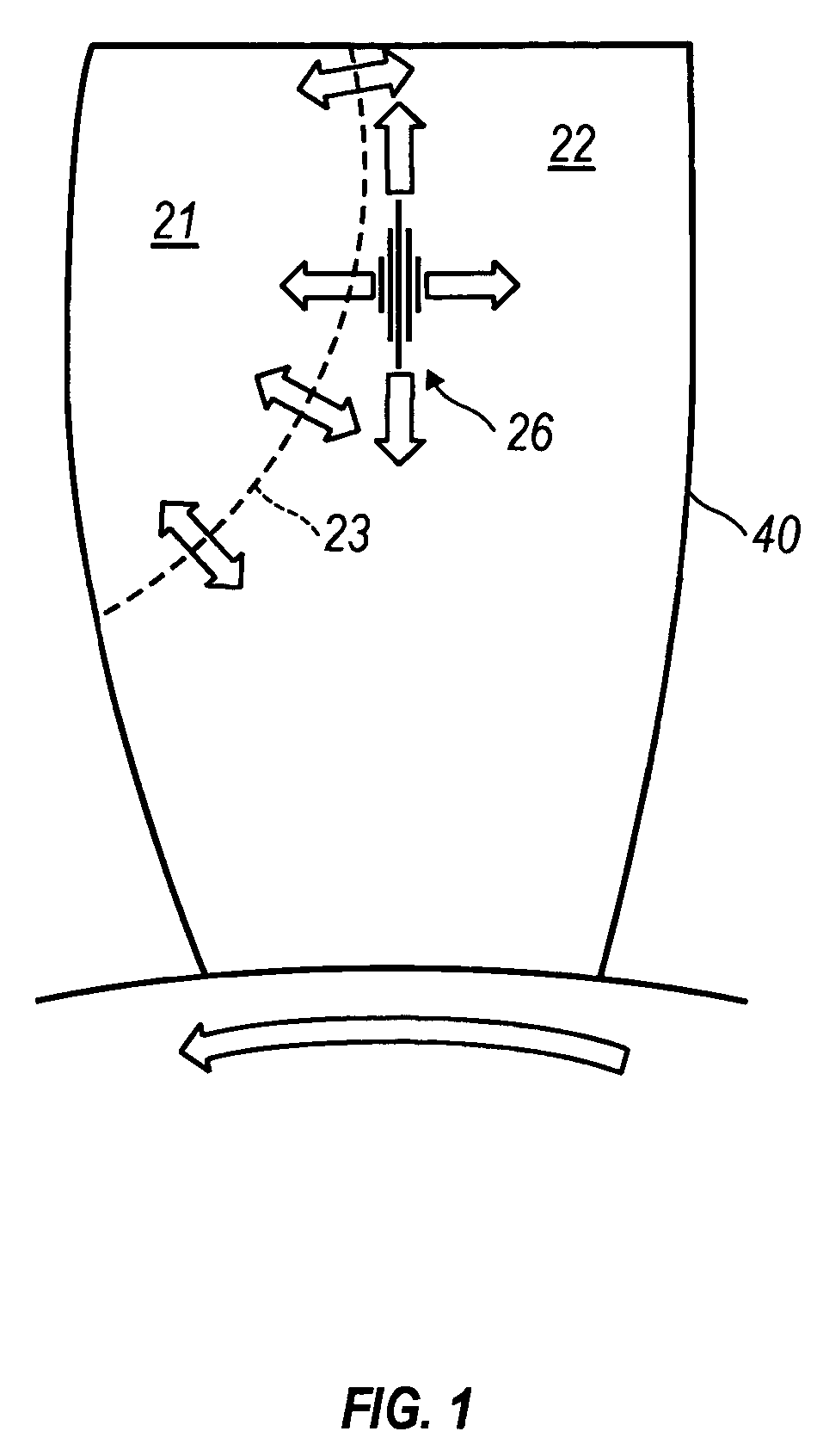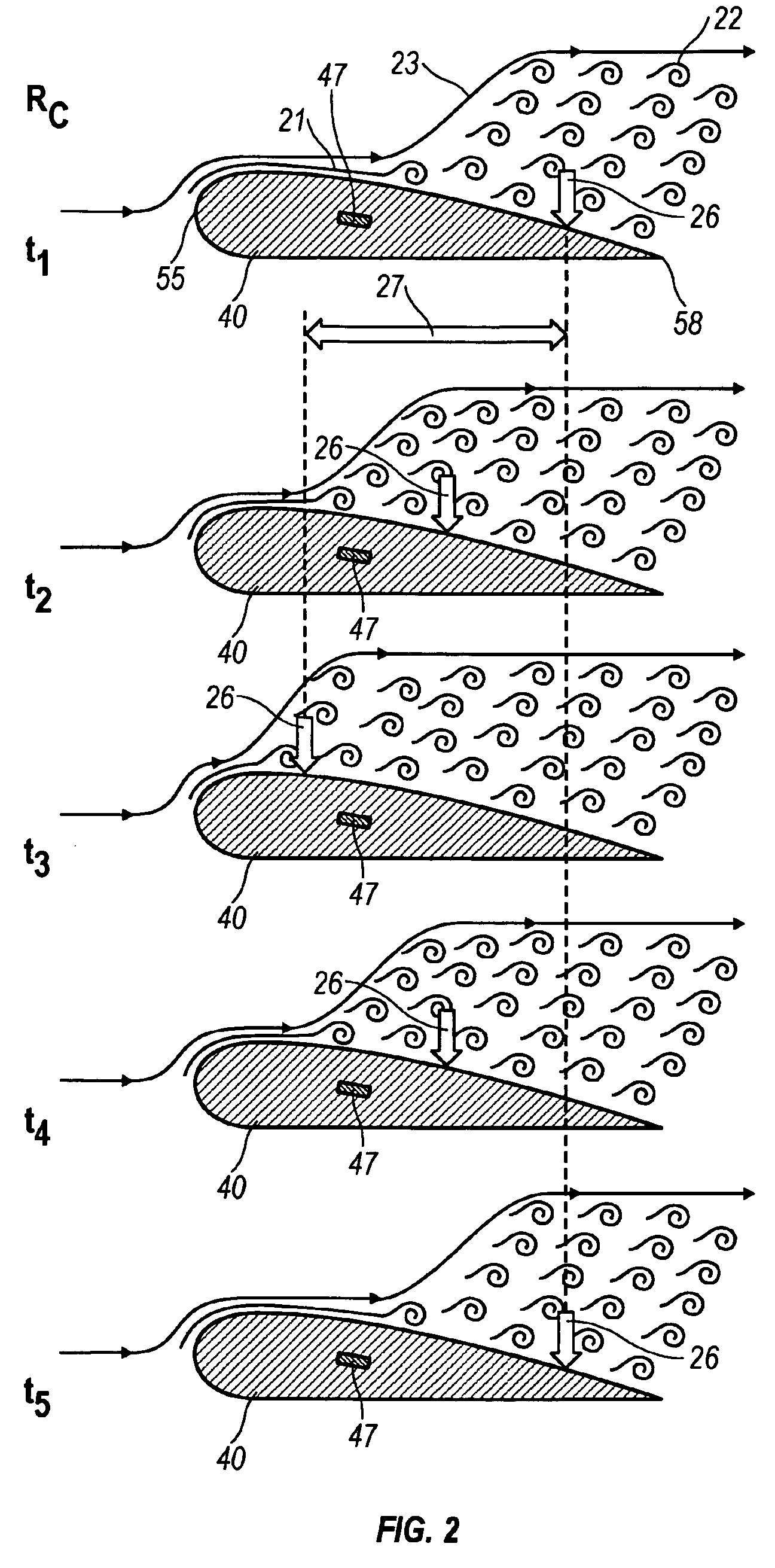Mitigation of unsteady peak fan blade and disc stresses in turbofan engines through the use of flow control devices to stabilize boundary layer characteristics
a technology of flow control device and turbine blade, which is applied in the direction of liquid fuel engine, vessel construction, marine propulsion, etc., to achieve the effects of reducing or eliminating unsteady aerodynamic flow effects, extending the life of the fan blade, and reducing the stress and resonance level of the blade and dis
- Summary
- Abstract
- Description
- Claims
- Application Information
AI Technical Summary
Benefits of technology
Problems solved by technology
Method used
Image
Examples
Embodiment Construction
[0034]In the description below and the accompanying drawings, various aspects of treated and untreated turbofan blades, and their incorporating structures, are described and illustrated. In that regard, the following reference numerals have been utilized to designate these features.[0035]jet aircraft[0036]region of laminar flow[0037]region of turbulent flow[0038]unstable laminar to turbulent boundary layer transition zone[0039]positionally stabilized boundary layer transition[0040]positionally steady aerodynamic force[0041]positionally unsteady aerodynamic force[0042]range of movement of unsteady aerodynamic load[0043]distance from leading edge of fan blade[0044]turbofan based power unit[0045]turbofan assembly[0046]fan disc[0047]turbofan blade[0048]fan blade tip[0049]chord length[0050]torsional axis of turbofan blade[0051]high-pressure side of turbofan fan blade[0052]low-pressure side of turbofan fan blade[0053]leading edge of fan blade[0054]trailing edge of fan blade[0055]essential...
PUM
 Login to View More
Login to View More Abstract
Description
Claims
Application Information
 Login to View More
Login to View More - Generate Ideas
- Intellectual Property
- Life Sciences
- Materials
- Tech Scout
- Unparalleled Data Quality
- Higher Quality Content
- 60% Fewer Hallucinations
Browse by: Latest US Patents, China's latest patents, Technical Efficacy Thesaurus, Application Domain, Technology Topic, Popular Technical Reports.
© 2025 PatSnap. All rights reserved.Legal|Privacy policy|Modern Slavery Act Transparency Statement|Sitemap|About US| Contact US: help@patsnap.com



